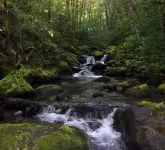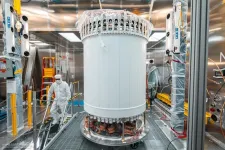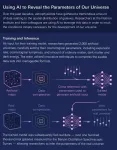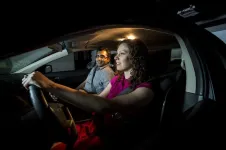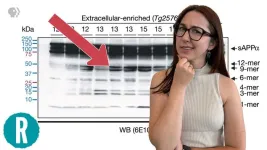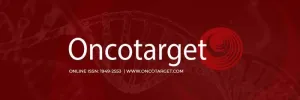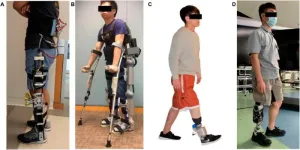(Press-News.org) Nothing in science can be achieved or understood without measurement. Today, thanks to advances in quantum sensing, scientists can measure things that were once impossible to even imagine: vibrations of atoms, properties of individual photons, fluctuations associated with gravitational waves.
A quantum mechanical trick called “spin squeezing” is widely recognized to hold promise for supercharging the capabilities of the world’s most precise quantum sensors, but it’s been notoriously difficult to achieve. In new research, Harvard physicists describe how they’ve put spin squeezing within better reach.
A type of quantum entanglement, spin squeezing constrains the way an ensemble of particles can fluctuate. This enables more precise measurements of certain observable signals, at the expense of measuring other, complementary signals as accurately — think of how squeezing a balloon yields more height at the expense of width.
“Quantum mechanics can enhance our ability to measure very small signals,” said Norman Yao, a physics professor and author of the new paper on spin squeezing in Nature Physics. “We have shown that it is possible to get such quantum-enhanced metrology in a much broader class of systems than was previously thought.”
In the balloon metaphor, a circle represents the uncertainty intrinsic to any quantum measurement, explained Maxwell Block, co-author of the paper and a former Griffin Graduate School of Arts and Sciences student. “By squeezing this uncertainty, making the balloon more like an ellipse, one can reshape the sensitivity of measurements,” Block said. “This means that certain measurements can be more precise than anything one could possibly do without quantum mechanics.”
An analog of spin squeezing was used, for example, to increase the sensitivity of the Nobel-garnering gravitational wave detectors in the LIGO experiment.
The Harvard team’s work built upon a landmark 1993 paper that first described the possibility of a spin-squeezed, entangled state brought about by “all-to-all” interactions between atoms. Such interactions are akin to a large Zoom meeting, in which each participant is interacting with every other participant at once. Between atoms, this type of connectivity easily enables the build-up of the quantum mechanical correlations necessary to induce a spin-squeezed state. However, in nature, atoms typically interact in a way that’s more like a game of telephone, only speaking with a few neighbors at a time.
“For years, it has been thought that one can only get truly quantum-enhanced spin squeezing via all-to-all interactions,” said Bingtian Ye, co-lead author of the paper and also a former Griffin Graduate School of Arts and Sciences student. “But what we have shown is that it is actually way easier.”
In their paper, the researchers outline a new strategy for generating spin-squeezed entanglement. They intuited, and together with collaborators in France quickly confirmed via experiment that the ingredients for spin squeezing are present in a ubiquitous type of magnetism found often in nature — ferromagnetism, which is also the force that makes refrigerator magnets stick. They posit that all-to-all interactions are not necessary to achieve spin squeezing, but rather, so long as the spins are connected well enough to sync into a magnetic state, they should also be able to dynamically generate spin squeezing.
The researchers are optimistic that by thus lowering the barrier to spin squeezing, their work will inspire new ways for quantum scientists and engineers to create more portable sensors, useful in biomedical imaging, atomic clocks, and more.
In that spirit, Yao is now leading experiments to generate spin-squeezing in quantum sensors made out of nitrogen-vacancy centers, which are a type of defect in the crystal structure of diamond that have long been recognized as ideal quantum sensors.
The research received federal support from: the Army Research Office, the Office of Naval Research, the Department of Energy, the Department of Defense, and the National Science Foundation.
END
Spin squeezing for all
Physicists ease path to entanglement for quantum sensing
2024-08-26
ELSE PRESS RELEASES FROM THIS DATE:
NSF funds research on the effects of evolution and food webs in climate change response
2024-08-26
Colorado State University is leading a new interdisciplinary research project into the ways predators and prey in sensitive ecosystems may react to climate change based on their physiology, genetics and relationships to each other.
Led by Professor Chris Funk in the Department of Biology, the project is funded by the National Science Foundation’s Organismal Response to Climate Change program and will focus on interactions between cutthroat trout and tailed frogs in Pacific Northwest streams. This approach is one of the first times researchers have tried to test both the effects of evolution and ...
Children's Brain Tumor Network hosts 2024 CBTN Summit to transform scientific research and patient care
2024-08-26
What:
The 2024 CBTN Summit hosted by the Children's Brain Tumor Network (CBTN) assembles the brightest minds in Pediatric Brian Tumor research for this annual conference. The event is free but attendees must register in advance.
Register at network.cbtn.org/cbtn-summit
Where:
In person at AWS Headquarters
Amazon WAS16 Aurora, 1770 Crystal Dr, Arlington, VA 22202
Virtual attendance available worldwide.
When:
October 9-11, 2024
Why:
This event is an opportunity ...
Long-term prognosis of patients with myocarditis attributed to COVID-19 mRNA vaccination, SARS-CoV-2 infection, or conventional etiologies
2024-08-26
About The Study: Patients with post–COVID-19 mRNA vaccination myocarditis, contrary to those with post–COVID-19 myocarditis, show a lower frequency of cardiovascular complications than those with conventional myocarditis at 18 months. However, affected patients, mainly healthy young men, may require medical management up to several months after hospital discharge.
Corresponding Authors: To contact the corresponding authors, email Laura Semenzato, MSc (laura.semenzato@assurance-maladie.fr) and Mahmoud Zureik, MD, PhD (Mahmoud.ZUREIK@ansm.sante.fr).
To access the embargoed study: Visit our For The ...
LZ experiment sets new record in search for dark matter
2024-08-26
Figuring out the nature of dark matter, the invisible substance that makes up most of the mass in our universe, is one of the greatest puzzles in physics. New results from the world’s most sensitive dark matter detector, LUX-ZEPLIN (LZ), have narrowed down possibilities for one of the leading dark matter candidates: weakly interacting massive particles, or WIMPs.
LZ, led by the Department of Energy’s Lawrence Berkeley National Laboratory (Berkeley Lab), hunts for dark matter from a cavern nearly one mile underground at the Sanford Underground Research Facility in South Dakota. The experiment’s new results explore weaker dark matter interactions ...
Astrophysicists use AI to precisely calculate universe’s ‘settings’
2024-08-26
The standard model of the universe relies on just six numbers. Using a new approach powered by artificial intelligence, researchers at the Flatiron Institute and their colleagues extracted information hidden in the distribution of galaxies to estimate the values of five of these so-called cosmological parameters with incredible precision.
The results were a significant improvement over the values produced by previous methods. Compared to conventional techniques using the same galaxy data, the approach yielded less than half ...
SETI Institute starts first low frequency search for alien technology in distant galaxies
2024-08-26
August 26, 2024, Mountain View, CA -- The SETI Institute, the Berkeley SETI Research Center and the International Centre for Radio Astronomy Research announced a groundbreaking study using the Murchison Widefield Array (MWA) in Western Australia. Led by Dr. Chenoa Tremblay of the SETI Institute and Prof. Steven Tingay of Curtin University, this research is the first to search for signs of alien technology in galaxies beyond our own, focusing on low radio frequencies (100 MHz). This innovative study used the MWA’s large field of view (FOV), allowing the team to cover about 2,800 galaxies in one observation, of which 1300 we know the distance to. Usually, the search for extraterrestrial ...
Bicycle rolling-stop laws don’t lead to unsafe behavior by riders or motorists, research shows
2024-08-26
CORVALLIS, Ore. – Laws that let bicyclists treat stop signs as yield signs lead neither riders nor motorists to act unsafely, according to a groundbreaking Oregon State University study.
The project by OSU College of Engineering researchers featured a novel experimental technique – linking separate bicycle and motor vehicle simulators – and the findings are important as more and more states consider bicycle rolling-stop legislation, said David Hurwitz, the study’s leader.
“It required fully connecting two independent simulators, running subjects in pairs simultaneously and having each subject interacting with an avatar of the other in a shared virtual ...
How a retracted paper affected the course of Alzheimer’s research (video)
2024-08-26
WASHINGTON, Aug. 26, 2024 — In June 2024, a landmark Alzheimer's research paper was retracted due to fraud allegations. Did we waste billions of dollars and thousands of hours of scientists’ time? Maybe not. There are now two potentially helpful drugs on the market targeting the subject of the paper: amyloid beta. This video breaks down the amyloid-beta hypothesis, the fraud itself and where we go from here.
Reactions is a video series produced by the American Chemical Society and PBS Digital Studios. Subscribe to Reactions and follow us on X, formerly Twitter @ACSReactions.
The American Chemical ...
Genotype Matters: Tailored screening for germline CHEK2 variants
2024-08-26
“In our study, we postulated that these differences were driven by three common low-risk (LR) missense variants: p.I157T, p.S428F, and p.T476M, all of which have a BC odds ratio of <1.4.”
BUFFALO, NY- August 26, 2024 – A new editorial was published in Oncotarget's Volume 15 on July 10, 2024, entitled, “Genotype matters: Personalized screening recommendations for germline CHEK2 variants.”
Recognized as a moderate-risk gene, CHEK2—responsible for encoding the CHK2 protein, ...
Interlimb and intralimb synergy modeling for lower limb assistive devices: Modeling methods and feature selection
2024-08-26
A research paper by scientists at Hainan University proposed FSS-eq2Seq as a 2-stage strategy for gait synergy modeling in lower limb assistive devices to achieve synergic and user-adaptive trajectories that improve human-machine interactions.
The new research paper, published on Jul. 03 in the journal Cyborg and Bionic Systems, indicatedSeq2Seq outperforms LSTM, RNN, and GRU in both interlimb and intralimb synergy modeling. Further, FS significantly improves Seq2Seq’s modeling performance.
The concept of gait synergy provides novel human-machine interfaces and has been applied ...
LAST 30 PRESS RELEASES:
Study: Teens use cellphones for an hour a day at school
After more than two years of war, Palestinian children are hungry, denied education and “like the living dead”
The untold story of life with Prader-Willi syndrome - according to the siblings who live it
How the parasite that ‘gave up sex’ found more hosts – and why its victory won’t last
When is it time to jump? The boiling frog problem of AI use in physics education
Twitter data reveals partisan divide in understanding why pollen season's getting worse
AI is quick but risky for updating old software
Revolutionizing biosecurity: new multi-omics framework to transform invasive species management
From ancient herb to modern medicine: new review unveils the multi-targeted healing potential of Borago officinalis
Building a global scientific community: Biological Diversity Journal announces dual recruitment of Editorial Board and Youth Editorial Board members
Microbes that break down antibiotics help protect ecosystems under drug pollution
Smart biochar that remembers pollutants offers a new way to clean water and recycle biomass
Rice genes matter more than domestication in shaping plant microbiomes
Ticking time bomb: Some farmers report as many as 70 tick encounters over a 6-month period
Turning garden and crop waste into plastics
Scientists discover ‘platypus galaxies’ in the early universe
Seeing thyroid cancer in a new light: when AI meets label-free imaging in the operating room
Neutrophil-to-lymphocyte ratio may aid risk stratification in depressive disorder
2026 Seismological Society of America Annual Meeting
AI-powered ECG analysis offers promising path for early detection of chronic obstructive pulmonary disease, says Mount Sinai researchers
GIMM uncovers flaws in lab-grown heart cells and paves the way for improved treatments
Cracking the evolutionary code of sleep
Medications could help the aging brain cope with surgery, memory impairment
Back pain linked to worse sleep years later in men over 65, according to study
CDC urges ‘shared decision-making’ on some childhood vaccines; many unclear about what that means
New research finds that an ‘equal treatment’ approach to economic opportunity advertising can backfire
Researchers create shape-shifting, self-navigating microparticles
Science army mobilizes to map US soil microbiome
Researchers develop new tools to turn grain crops into biosensors
Do supervised consumption sites bring increased crime? Study suggests that’s a myth
[Press-News.org] Spin squeezing for allPhysicists ease path to entanglement for quantum sensing



